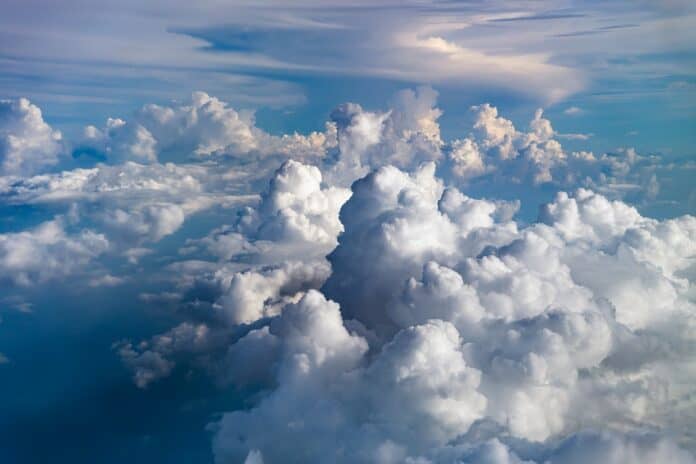When looking at the sky, it is an unmistakable fact to observe those structures that, at first glance, look like cotton wool. these objects, They are nothing more and nothing less than the clouds, a natural part of the ecosystem with an important life cycle.
They, by themselves, seem like they are just floating in the air for no apparent reason. However, its importance and participation within the ecosystem, It's more relevant than you actually think.
You may also be interested in our article: What is the gravity of the planets that make up our solar system?
Discover the background that exists! What are clouds?
At first glance, the clouds seem to be made of cotton or a quilted element that generates restlessness. However, to understand what clouds are is to notice the magnitude of their importance for nature.
Like other elements that are part of the ecosystem, clouds also have their definition and function. They, from the simplest such as providing shade, are the main messengers of the climate in general.
In short, clouds are accumulations of different shapes and sizes according to their type. These accumulations go through two specific processes, one widely known and called condensation; while, the other, sublimation.

Source: Environment
During the condensation process, water vapor rising into the atmosphere as a result of the water cycle, interacts with low temperatures of the medium. After a series of reactions, the initial vapor is transformed into dense water particles.
For its part, the sublimation process converts the water vapor into a cluster of ice with a density greater than its predecessor. In that sense, the clouds can be purely water or ice or even mixed.
In turn, to better understand what clouds are, their simplistic misconception must be left behind. They not only participate in the water cycle, they are also capable of transmitting heat. These enigmatic sky objects are more versatile than meets the eye.
Have you ever wondered how clouds and their types are formed? Know the whole process!
Within the most basic definition, the process of how clouds form will initially depend on the sun and the heat it gives off. The oceans, lakes, rivers and small bodies of water, They evaporate and rise directly into the atmosphere.
Once at that point, the pressure of the air added to the low temperatures, condense the water vapor little by little. In a matter of time, the water particles become denser, until they form what are clouds.
As the cloud becomes loaded with water particles, these become heavy elements. At a certain point, the water precipitates as rain from the cloud, either in its liquid form or in its solid form (hail).
However, this is not the only way to understand how clouds form. They result from the interaction between cold fronts and warm fronts, respectively. When the frigid air brushes against the hot stream, it pushes the hot stream up.
The moment that happens, the hot stream expands and lowers its temperature. In addition, added to the influence of the higher cold layers in the atmosphere, it generates the water particles of the current, to condense. Each type of interaction is different and depending on how they occur, they may or may not form certain kinds of clouds.
high cloud formation
As their name indicates, they are those that lie higher in the atmosphere, with a more scattered and dim appearance. Among them are cirrus, cirrocumulus and cirrostratus, each with its main characteristics.
Regarding the cirrus clouds, they are clouds in the form of hair or long threads, transparent and scattered. Cirrocumulus have a more compact shape, separated from each other, but in a group and are no longer transparent. Lastly, cirrostratus have excellently sharp edges and generally produce solar or lunar halos.
Medium cloud formation
Due to their position, the middle clouds become more compact and condensed in relation to the previous ones. Altocumulus appear first, scattered cotton-shaped clouds with irregular edges and structure.
Next, the altostratus appear, a consolidation of denser clouds with the same forms mentioned above. They are the omen of small clouds and, in general, partially cover the sun.
low cloud formation
It is the type of cloud most associated with storms and climatic changes, with nimbostratus as a flag. They generate a layer of grayish color, followed, without transparency and with the appearance of wrinkles or stretch marks.
For its part, also describes the stratocumulus, similar to the above clouds in appearance and color. The only difference is that they are keeping a little distance from each other. Some of them, due to their low altitude, trigger the strata, known colloquially as mist.
Within this type of cloud, those of vertical growth, such as cumulus and cumulonimbus, are also included. Cumulus clouds are gigantic clouds with a top that grows vertically, supported by a horizontal platform. On the other hand, cumulonimbus clouds, have a more erratic, extensive and marked growth, characterized by a mushroom-shaped tip.
In short, what exactly are clouds made of? Clear the doubts!
Knowing how they form, now it's time to answer what clouds are made of. As mentioned above, they are made up of super condensed water particles at low temperature.
Water vapor, depending on the maximum level of altitude it reaches and at low temperatures, can become liquid or solid. In this way, the classic rainy precipitations or those that contain hail are given rise.

Source: SuperCurious
However, to understand what clouds are made of, it is also important to know your “sponsors”. In addition to temperature and a low pressure system, clouds are made up of hot currents or cold currents.
Each type of current, also called hot or cold fronts, is correctly delimited from one another. And, as mentioned above, through the interaction they make with each other and the ecosystem, they form the clouds and their specific types.